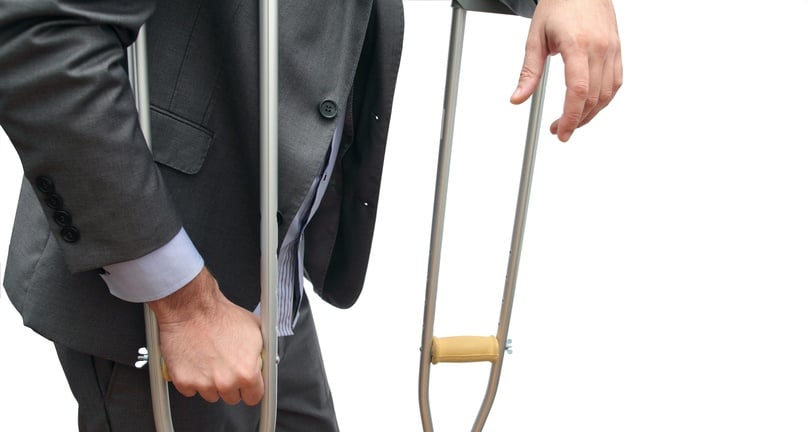We write here frequently about the importance of using visual evidence in trials and indeed in all sorts of other legal forums. But technology is not the be-all and end-all of persuasion. It is a very useful tool, but the importance of technology does not lessen the need to tell a convincing story to a jury or another decisionmaker.
In fact, if courtroom technology is not deployed correctly, presenting visuals to a judge or jury can detract from one’s message rather than enhance it. In other words, figuring out who will be victorious at trial is not simply a matter of determining who is using litigation graphics and who is not. Any trial is ultimately about how each side can use its graphics to support an effective story. Technology-based graphics, therefore, should not be used to make up for the trial skills a lawyer lacks, but rather to enhance the skills he or she already possesses.
The type of technological visual is another variable to consider when presenting an argument. Some research has suggested that depending on the case, different types of technology-based graphics can have different persuasive effects on the jury. For example, researchers compared a computer simulation of an air crash, an audiotape with written transcript of a cockpit voice recorder, and a speaker reading the cockpit voice recorder, and asked people to decide whether they believed there was a pilot error based on the evidence to which they had been exposed. The researchers found that jurors who were shown the computer animation believed the flight crew to be significantly less negligent that the other jurors who did not. Animations are so powerful because they can take us to places human beings cannot go. But even without animations, simple PowerPoint slides can be quite effective in advancing your narrative if done right.
For example, in one study, plaintiffs’ use of PowerPoint slides featuring graphs illustrating statistical evidence increased the defendant’s perceived responsibility in a civil case, but text slides summarizing expert testimony did not. Whatever type of technologically based graphic a lawyer decides to use, it is important to make sure that it is the best and most appropriate medium to demonstrate the evidence to your audience.
Of course, some jurors may not regularly use technology or may distrust it. Thus, lawyers planning to use technology to supplement their arguments or display and summarize evidence should question prospective jurors in voir dire about their feelings regarding technology.
Finally, lawyers need to be comfortable in presenting their graphics. A lawyer who is ill-prepared to use technology and fumbles with the computer or experiences a glitch may lose whatever added credibility that the technology may provide. And no technology can replace a well-developed legal and factual argument that constitutes a believable narrative. That story is the true key to every successful trial.
Other A2L free articles, e-books, and webinars related to courtroom technology, computer animation, litigation graphics, and voir dire:
- At Trial, Prepare for the Best But Expect the Worst
- What Does Using a Trial Technician or Hot-Seater Cost?
- Don't Use PowerPoint as a Crutch in Trial or Anywhere
- 6 Studies That Support Litigation Graphics in Courtroom Presentations
- 11 Traits of Great Courtroom Trial Technicians
- The 14 Most Preventable Trial Preparation Mistakes
- How PowerPoint Failures in Demonstrative Evidence Can Sink a Case
- Considering a Trial Technician for Litigation?: What You Must Know
- 5 Problems with Trial Graphics
- 5 TrialDirector Tips for Success
- WATCH: Trial Technicians in Action at an Arbitration/Trial
- Today's Tech Failure at the George Zimmerman Trial Takes Center Stage
- 12 Ways to Avoid a Trial Technology Superbowl-style Courtroom Blackout
- Free download: How to Deliver a Great Presentation (145-page ebook)
- Free download: Storytelling for Litigators
- Free download: Using Litigation Graphics to Persuade
- 9 Things That Define the Best Litigation Graphics
- 5 Tips for Using TrialDirector and Trial Technicians Effectively
- FREE DOWNLOAD: Storytelling for Litigators: Building a Great Narrative for Judge & Jury
- FREE WEBINAR: Storytelling as a Persuasion Tool
- 17 Reasons Why Litigation Consultants Are Better at Graphics Than Law Firms
- FREE DOWNLOAD: Complimentary Complex Civil Litigation E-Book Download
- FREE DOWNLOAD: A Litigator's Guide: How To Find and Use Trial Technicians and Trial Technology
- FREE DOWNLOAD: Using & Creating Litigation Graphics to Persuade - An E-Book for Litigators and Litigation Support Professionals
- 12 Ways to SUCCESSFULLY Combine Oral and Visual Presentations
- 16 PowerPoint Litigation Graphics You Won't Believe Are PowerPoint




Leave a Comment